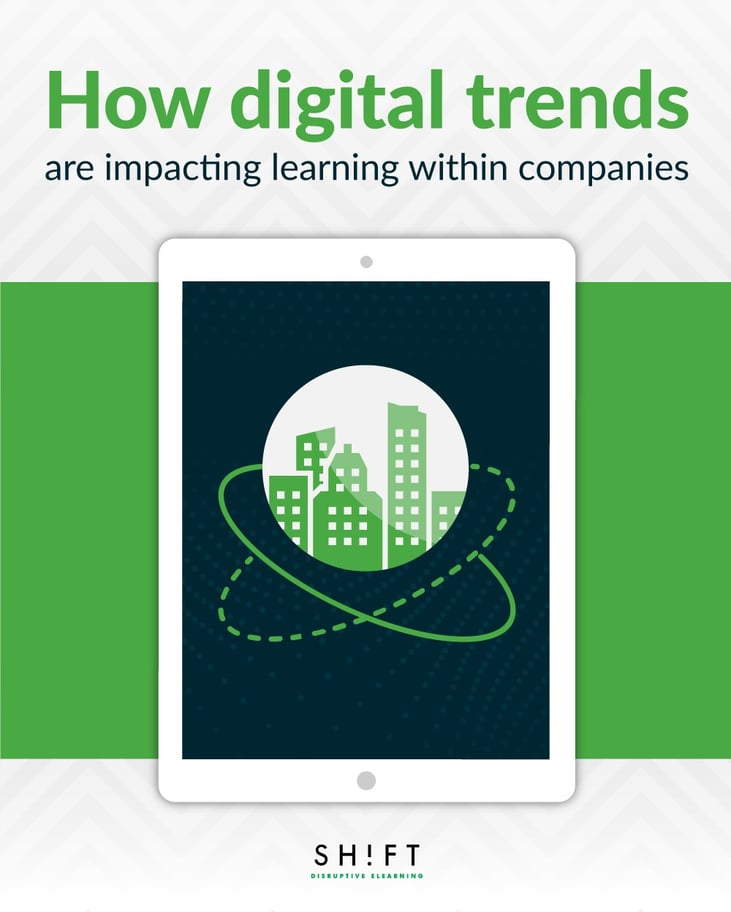We’ve come a long way in the ways of corporate training and learning. The history of corporate training and development dates back to 1872 where Hoe and Company established factory schools to help train machinists during the Industrial Revolution. By 1917, corporate training had expanded into “Show, Tell, Do and Check” method from Charles R. Allen where he would walk his shipyard workers through complex processes. By the 1950’s and 1960’s, computers help introduce virtual reality and technology-assisted instruction.
As the world becomes more innovative, so are the ways we learn in school, at our jobs, and in life. Gone are the days where onboarding and corporate training is a one size fits all video for employees to learn and engage in. Today, corporate training programs have the choice, from microlearning to custom eLearning development, on how to best train their incoming workforce. As such, these training programs will most likely incorporate current digital trends to not only help engage top talent but help them grow within their career and stay with the company longer.
Below are four digital trends that are impacting corporate training and learning, and why organizations should consider incorporating them.

1) Mobile Devices
Everyday we interact and use our mobile device, sometimes even working directly with it. As more smartphones become affordable to more people—according to IDC, 2.6 billion smartphones were sold worldwide in 2014-2015—the more likely mobile devices become an essential tool for our work-life. As such, mobile devices have opened up a world of Bring Your Own Device (BYOD) to organizations as well, so why not create learning programs that are readily available outside of the workplace? Think about it. By creating training programs that are readily available on tablets and phones, workers can then schedule the training on their own time and at their own pace. Plus, now with mobile devices, your training and learning programs can reach to other workers and markets that are outside of the office.
Also, by making training available on mobile devices, it can boost workforce performance. Along with accessibility, training through mobile devices can help employees immerse themselves in the various topics and skill sets. With this integration of learning into daily work routines, it can help employees better master the skills while on the job at a faster and more efficient rate.
Also Read: How Mobile is Revolutionizing the Learning Landscape
2) The Internet of Everything (IoE)
According to Cisco , the IoE is "the networked connection of people, process, data, and things—which is becoming the basis for the Internet of Learning Things".
According to the Whitepaper "Education and the Internet of Everything" by 2020 50 billion things will be connected. This means that in the next few years, corporate training within companies will change drastically, connecting workers in ways you've never imagined. With higher computing power, organizations will be able to deliver the right information to the right employee in the right time. Companies will be able to get real-time information about what is and is not working within their training programs and how well they train and grow employees within their jobs. Not only will it create more efficient training programs, but open the doors for more specialized skill sets in the workforce, such as IoE trainers and engineers to help advance IoE within a company.
You can view Cisco's full report here.
“The highest and best use of IoE in our view involves humans and devices working together. When we have the ability for devices to do machine-to-machine communication, that’s good; however, we feel that when there is also room for human analysis and review, interpretation of that information, and the ability to act upon that, that’s a big value.” Sanjay Parker of Xerox Learning Services
3) Social Media
Social media and social tools are impacting how training and learning programs collaborate and receive feedback. Better yet, these tools help foster a learning culture among employees, where employees are treated as experts and mentors that can be a resource for other employees that are training and learning. A key into learning and corporate training programs is the interaction and collaboration that they give the learner to help develop the skill at an efficient rate. When implementing training, try to move beyond discussion forums and comment sections, but integrate video or other types of rich media. This not only helps increase engagement and interaction, but research shows that interactive media through social tools can improve employee-learning functions.
Also read: 5 Secrets to Increase Employee Engagement With Technology
4) Virtual Reality
Lastly, virtual reality is also playing a big role in learning within companies. It’s helping employers put employees in on-the-job situations at a faster rate and helps develop the skills for real-life situations and scenarios.
Other educational industries are also taking advantage of this, as virtual reality is already making waves in the medical community. More and more universities, residency programs and hospitals are training their medical students with the use of simulation medicine to help practice lifesaving procedures. Mary Spio, CEO of Next Galaxy explains, “By visualizing the situation, it sinks in a more visual way when they have actually experienced the procedure beforehand. They become more responsible for their own healing and treatment by having a deeper understanding.” These real-life situations may be the best way to train new employees as the skills are remembered and developed. As such, virtual reality is one digital trend that will continue to improve in the coming years and expand to many industries and their corporate training programs.
All and all, as a CEO or manager, look at current and future digital trends and see how you can incorporate these into your current training and learning programs to you’re your staff advance their skillsets and career overall.

REFERENCES:
The Internet of Everything will Impact Everything, Including Your Next Tech Job https://www.wired.com/insights/2015/02/internet-of-everything-your-next-tech-job/
Internet of Learning-Things. August 21, 2013 By MIKELLOYDTECH







